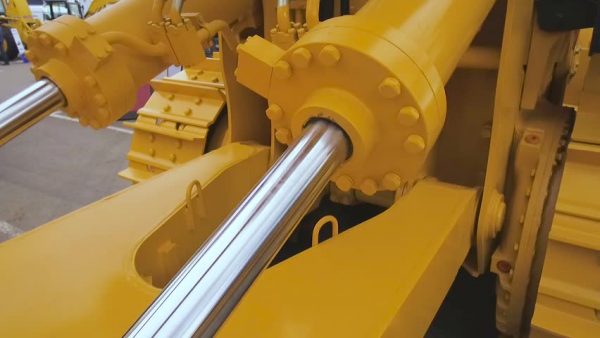Core Reasons Behind Failure of Hydraulic Cylinders
Just like any other piece of machinery or equipment, a hydraulic cylinder too, undergoes periodic wear and tear depending on its usage. There may be different types of issues that can lead to a need for hydraulic cylinder repair.
Why do hydraulic cylinders wear out?
Just like loyal soldiers, the hydraulic cylinders work tirelessly to ensure a winning performance for mechanical and industrial applications. Since they work behind the scenes, many overlook their health. The immense force emanating from the operation of such cylinders means that the critical components around it, as well as the cylinder elements themselves, face a lot of friction and pressure with every operation.
Be it the auto manufacturing, railroad operations, aerospace industry, or manufacturing, the critical advantage of a hydraulic system is its ability to generate massive force with minimal effort. However, this tends to take a toll on its performance over time.
If you operate such cylinders or if the downtime of these cylinders impacts your business, then this post is definitely for you.
Today, we take a look at some common causes behind hydraulic cylinder failures and what can be done for the repair of hydraulic cylinders.
1. Extreme temperatures
Cold temperatures impact the viscosity of the hydraulic fluid within the system. On the other hand, too much heat can damage the sales, valves, and bearings around the hydraulic system. It can even break down the oil thus, reducing its impact. Hence it is essential to maintain the right temperature. the right degree of temperature will depend on the design of the hydraulic cylinder and the materials used.
2. Contaminated hydraulic fluid
Impure or polluted liquid within the hydraulic system is one of the more common causes that can lead to the poor performance of the cylinders. The top way these fluids can be contaminated is by allowing external particulates to mix with it, thereby disturbing its composition. Such impure fluid can eat at the linings of valves, sales, fittings, and bolts.
3. Unintended strain on the cylinders
Every cylinder is designed as per the operational configuration of the overall machinery. It is positioned to allow maximum force occurring in both ways (or in a single direction, as needed). However, in many cases, forces are inadvertently applied on the perpendicular axis. This phenomenon is known as sideloading can accelerate wear and tear on the parts. If the issue goes on for long, then it can lead to disastrous results with total damage to the overall machinery which holds the hydraulic cylinder.
4. Damaged seals
Well-performing seals successfully maintain pressure internally to allow the cylinder to work correctly. If there is a leak to the seal or if contaminated liquid impacts the sale, then its performance gets eroded quickly. This drop in efficiency means that the internal pressure no longer works as expected, thereby reducing the efficacy of the cylinder itself. It is essential to replace such damaged seals at the right time to prevent further performance deterioration.
5. Damaged piston rods
When the piston rods aren’t in sync with the shape of the load of the cylinder, then this misalignment can cause a severe drop in the cylinder’s performance. Also, the bolts that keep the piston in place may become loose over a while, thereby degrading the cylinder’s performance. Even side loading and contaminated hydraulic fluid can be key reasons why the piston rods do not function as intended.
6. External damage
Many times, the system itself may bear the brunt of extreme weather conditions, leading to wear and tear for hydraulic system accessories. It can also develop cracks in the body of the system that results in fluid leaks from within. If the piston is bent out of shape or if the device is repositioned, then it may cause unnaturally high side loading. This is an issue that one must avoid at all costs. Doing so will maximize the life of the hydraulic cylinder.
To conclude
These were some common issues that may crop up for this a hydraulic cylinder. The critical part of comprehending here is that the longer the problem persists in the device, the more prominent will be the impact of the damage or loss of productivity. Another common problem is that operators do not treat the hydraulic cylinder as a precision. It needs to be adequately maintained so that it continues delivering the right output as per expectations. The use of incorrect types of seals and hydraulic fluids can wreak havoc with the device’s functionality or even total failure of the system.
It is wise to enlist the expertise of a trusted manufacturer and supplier of mechanical and hydraulic parts to extract maximum value from hydraulic repair services.

















